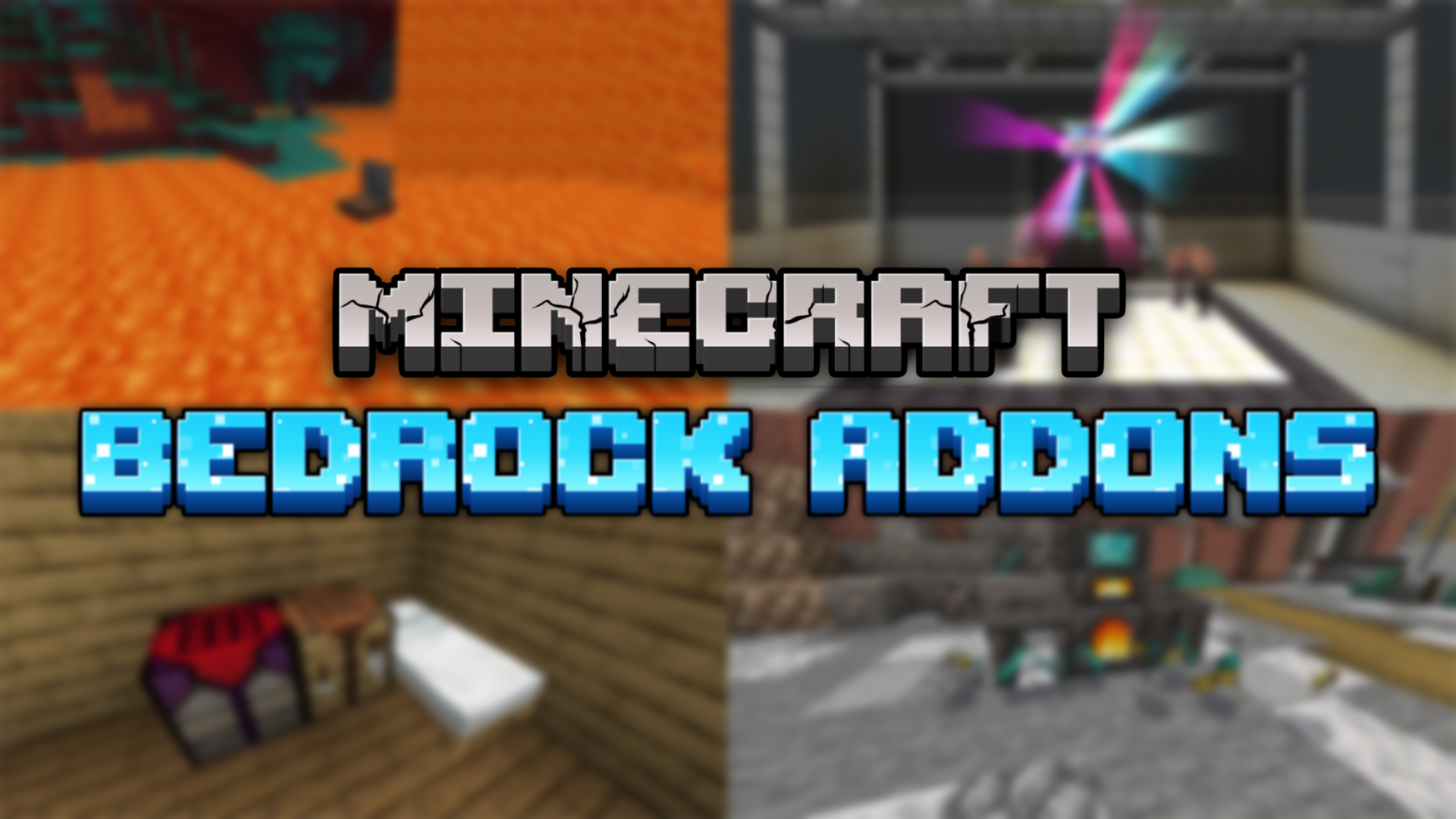Never Alone developer interview – Secrets of the folklore-based platformer for Xbox One

Never Alone is a cooperative platformer for Xbox One that stars a young girl named Nuna and her mystical Fox companion. The pair must traverse the frozen climes of Alaska as they seek a way to stop the endless blizzard that plagues Nuna's village. Never Alone is a unique and beautiful window into the folklore and culture of the Native Alaskan Iñupiat people, and also an entertaining game in its own right.
First announced back in May, Never Alone now available on Xbox One and Steam. Before you grab the game (or after!), be sure to read our in-depth interview with Grant Roberts, Lead Game Designer from E-Line Media, the publisher of Never Alone. We've got lots of behind-the-scenes details, concept art, and an exclusive gameplay video that highlight just what an uncommon game Never Alone really is.
Hi! Please tell us about some of your interests outside of video games.
Lately, I haven't had much time for interests outside of work — we've been working long hours here at the studio to put the final finishing touches on Never Alone as we get ready to launch worldwide.
When I'm not playing or making games, I really enjoy singing terrible 90s songs at karaoke bars, nitpicking scripted television shows so much that I ruin them for everyone else, and taking impromptu road trips with my wife around the Pacific Northwest.
What are some of your favorite games, both current and from the past?
My answer changes every day, but you'll usually find System Shock 2, Final Fantasy VI, Star Control II, Super Metroid, and The Legend of Zelda: Ocarina of Time in some order at the top of the list. The tricky part for me is reconciling games that have come out in the last 15 years with those. Journey, Limbo, Gone Home, Cave Story, Brothers... you all might make it up there someday.
I've also recently had the chance to finally check out some of our peers in the puzzle platformer space while at my desk, usually while waiting for builds to finish. So I've really been enjoying The Swapper, The Fall, Schein, and especially Teslagrad.

Grant Roberts
All the latest news, reviews, and guides for Windows and Xbox diehards.
Say, Star Control II is one of my old favorites as well. How did you go from playing games to making them?
I've been playing games as long as I can remember, well before one of my first memories of my father standing me up on a milk crate so I could reach the Galaga controls at a 7-Eleven.
I got my first computer for free in 1982, thanks to my mother receiving it as a gift for attending an all-day real estate event — she had no interest in buying into a timeshare, but a lot of interest in helping her son start programming. That computer (a Timex Sinclair 1000) had a staggering 2KB of memory and used cassette tapes for storage.
So yeah, I've been doing this for a while. After all, back in those days, if you wanted to make games for a living, you had to know how to code. So I took classes in and out of school to learn how to program in BASIC, Logo, PASCAL, and many others… until I realized in college that my destiny was to be found elsewhere.
A few years later, I was hired as an Editor at Next Generation Magazine). Two years after that, I got my foot in the game development door as a QA Engineer. Fifteen years after that, I'm leading the design team here at E-Line Media.

Please tell us about the creation of Upper One Games. Did the studio exist before embarking on the development of Never Alone?
The Cook Inlet Tribal Council (CITC) approached E-Line Media back in 2012. CITC wanted to explore ways to tell their stories and share their culture with modern audiences, so [the two groups] began a collaborative process that has been unlike anything I've ever been a part of. Upper One Games is the company formed by CITC to develop Never Alone with E-Line Media.
CITC and Upper One Games are located in Alaska. E-Line Media is headquartered in New York, but the Never Alone development team operates out of Seattle.

What are some games that influenced you during the Never Alone development process?
The platformer is one of the most well-known genres in the history of games, so I've been influenced by decades of them. From the first non-Super Mario Bros. all the way to Super Mario 3D World and everything in between, I've been influenced by every one of them I've played along the way, good or bad.
But some of our more contemporary peers have been an even stronger influence for me. Some of my favorite games of the last few years are Braid, FEZ, Limbo, Journey, Rayman Origins and Legends, and Brothers, so you'll probably see their influence in the final gameplay experience.
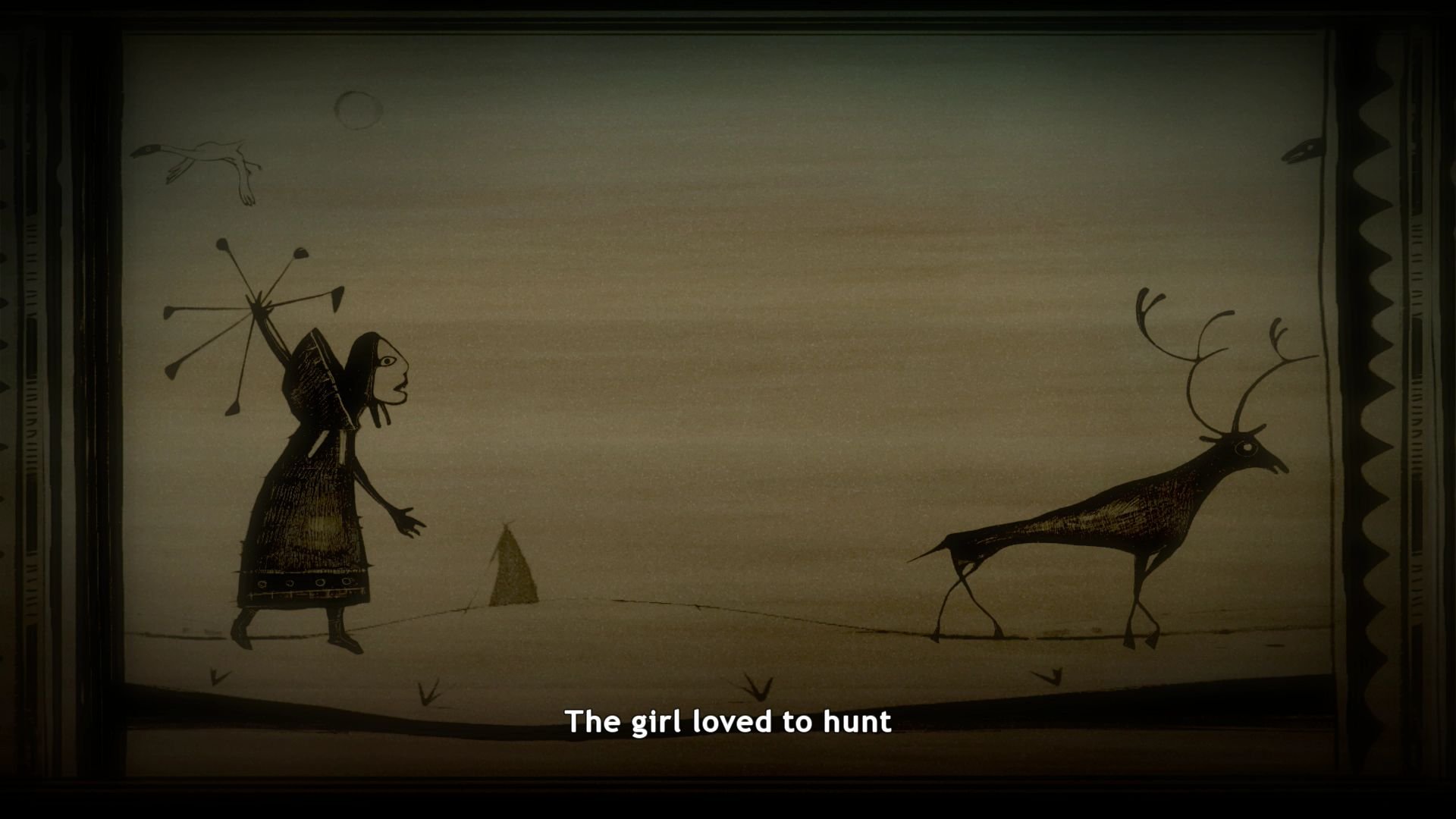
Introductory cinematic
Never Alone is built around the stories of the Native Alaskan Iñupiat people. Is the game entirely folklore based, or does it incorporate real-life elements as well?
We worked closely with Ishmael Angaluuk Hope to immerse ourselves in the rich stories of the Iñupiaq people and look for inspiration in the game we wanted to make. We eventually settled on the story of Kunuuksaayuka, which tells the tale of a man whose village is plagued by an eternal blizzard, and his journey to find its source.
Once we realized that was the perfect framework for the game, we licensed the story of Kunuuksaayuka as told by Robert Nasruk Cleveland, and gained permission from his daughter, Minnie Aliitchak Gray. So while the framework of the game follows the story of Kunuuksaayuka, Nuna and Fox have plenty of other adventures featuring well-known characters from Iñupiat stories along the way.
The game does feature real-life elements as well, of course — we worked closely with the community to make sure that everything you see in the game reflects what you would see in real villages and other environments.

Xbox One gameplay
What are some of the themes of the story?
There are many things that the Iñupiat people consider to be core values, but the three that we chose to focus on in Never Alone are resilience, interdependence, and intergenerational exchange.
Resilience is obvious: life in the Arctic is incredibly difficult in the best of times, and when you add the fiercest blizzard in history to the mix, only the most resilient of people will be able to survive. The blizzard is the main antagonist in Never Alone, so Nuna and Fox have to take shelter from it whenever they can.
Interdependence isn't just about Nuna and Fox relying on each other to make progress in their journey, although that's definitely the most common example of it in the game. But interdependence also means relying on other members of the community around you to live your life. It means having respect for the world around you, from your fellow person to nature and the spirits that are everywhere.
Intergenerational exchange, however, is not as immediately obvious as the others. The story of Nuna and Fox is voiced in spoken Iñupiaq (another first in games!) by an elder. But intergenerational exchange is just as important to us outside the game as it is inside. Part of that is playing through the game side-by-side with a friend or family member, which provides an experience that's unquestionably different from playing with someone in another room far away. We wanted that personal touch to come through in the game itself as well as the experience of playing it, so we chose to focus on local co-op.
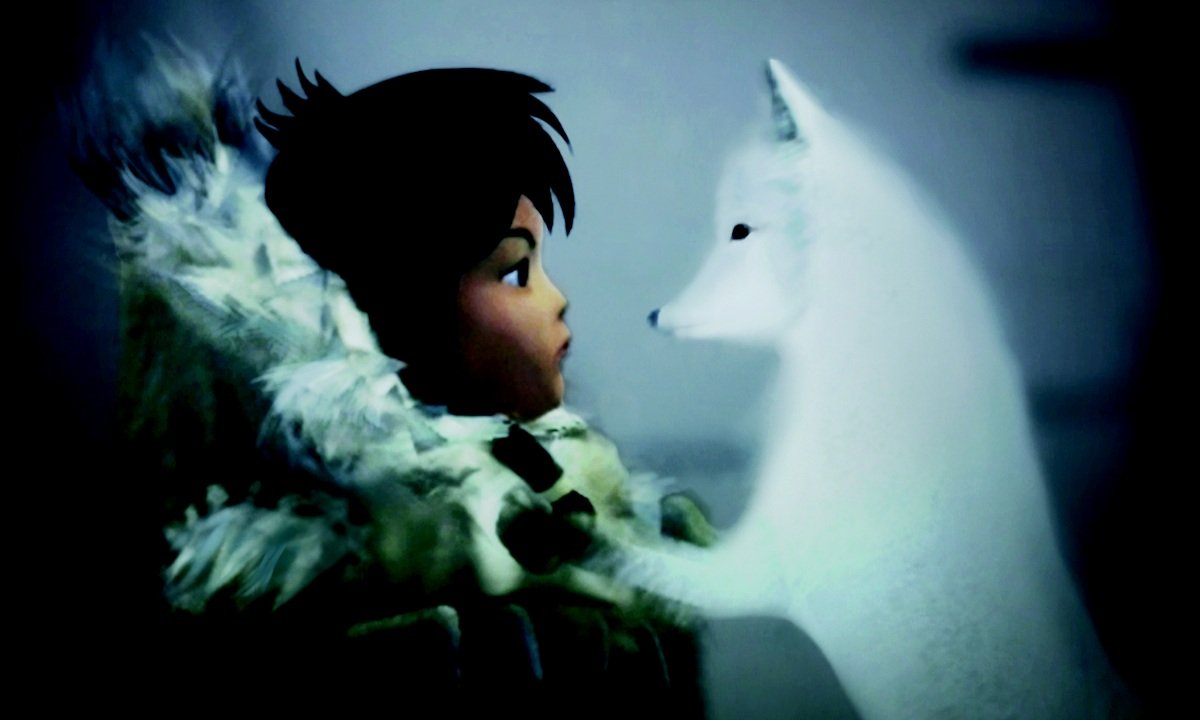
The game stars a young girl named Nuna and a fox she meets early on. Can you tell us about the relationship these protagonists share?
By the time the player meets Nuna and Fox, they have already known each other for a while. Fox is not Nuna's pet — the two are companions whether they're on an adventure or not. Nuna and her people believe that Siḷa is all around us, from the earth to the stars, whether it's visible or not. Fox allows Nuna to see the world of the Helping Spirits herself.
Will Nuna encounter other human characters over the course of the game?
She will, but just because a character is human doesn't mean that they will help Nuna in her journey.
How do the two protagonists deal with enemies? Do they have any attacks?
Early in the game, Nuna acquires a special bola that has been passed down to people in her village for generations, but she mostly uses it to solve puzzles and clear obstacles.
Enemies in the Arctic are so fierce and dangerous that Nuna and Fox's best option to deal with them is usually to run. When confrontation does happen, the companions will usually have to use their wits to survive rather than attacks.

Xbox One gameplay
Early on, Nuna must avoid a rampaging polar bear. Will there be actual boss battles later in the game?
As James Nageak, our Iñupiaq narrator, says during the game: "Kaakami nanuq nikatchalaitchuq." A hungry bear will not give up easily!
It's not just polar bears that Nuna has to worry about, though. She and Fox will encounter many challenges and enemies along the way.
Never Alone can be played alone or with a friend in local co-op. What are the cooperative elements of the gameplay?
If you play through the game in single-player mode, you can switch between Nuna and Fox at any time with one button press. It's a lot of fun to switch back and forth in the middle of puzzles (and more exciting times) so each character can use their own unique abilities.
In addition to her aforementioned bola, Nuna can climb ladders and ropes, and move heavy objects. Fox can scramble up sheer walls and jump from them to reach great heights. Plus, he's small and can fit through small spaces.
Over the course of the game, the two companions will have to use every trick up their sleeve to stop the blizzard.
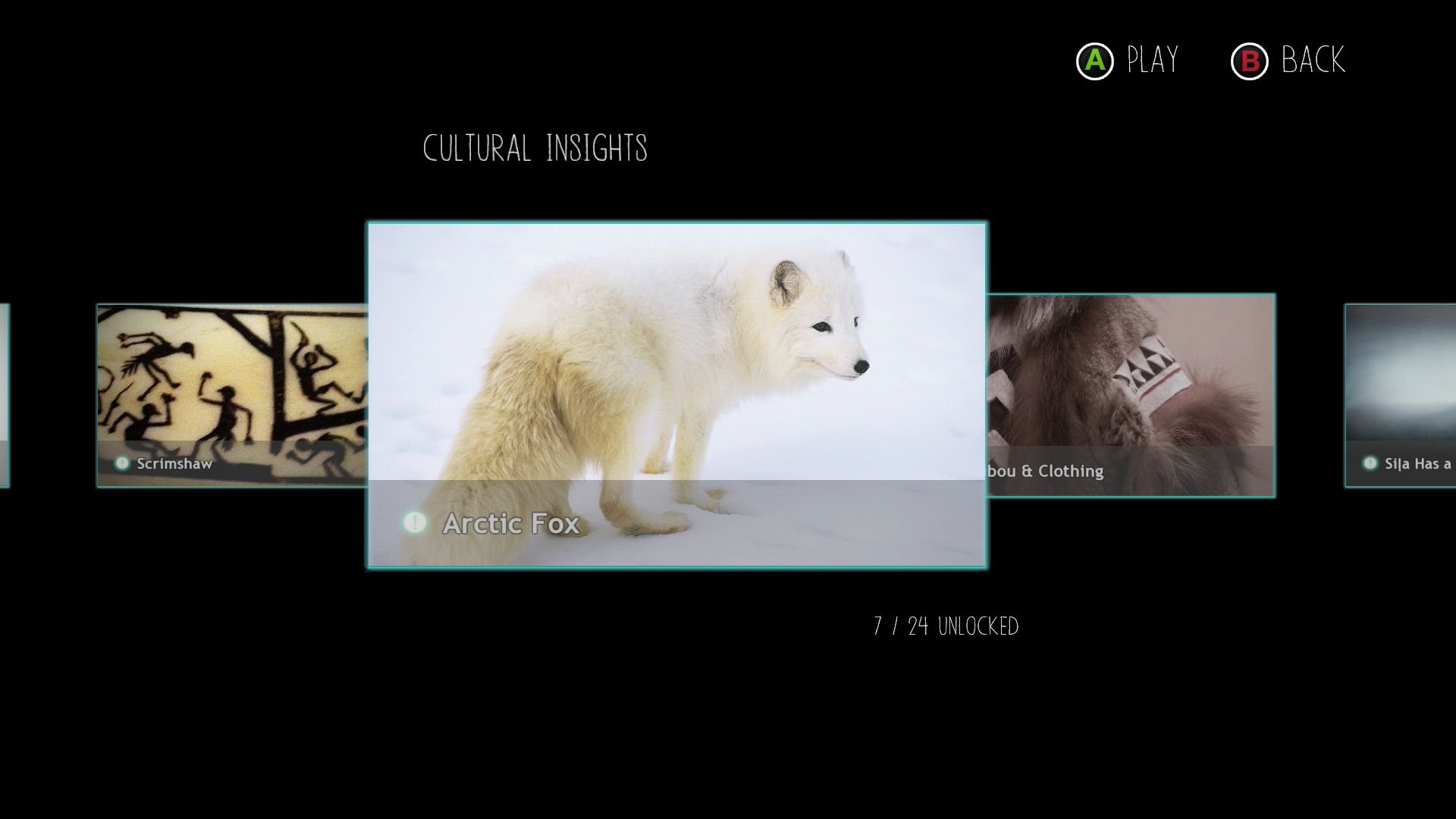
Players can unlock informational videos about Native Alaskans as they progress through the game. Are there any hidden or missable videos?
You unlock those Cultural Insight videos (as we call them) by finding owls in the environments you visit. Not all of them can be found on a normal playthrough, though — some of them are hidden in difficult-to-reach places. After you finish each chapter, you can replay it at any time and try to find the hidden owls.
The game takes place in a snowy region of Alaska, which means a lot of white in the visuals. Did you find ways to incorporate more colors into the game's palette as well?
I asked Dima Veryovka, the Art Director here at E-Line, for his response to this question. Here's what he said:
"The goal was to create this game with a very atmospheric, soft looking feel that captures Arctic beauty. This is why it was rendered using a lot of pastels and desaturated colors, which helped us to create very moody, dreamlike visuals while still portraying an authentic and believable Arctic world.At the same time, the ghostly green Aurora lights, crystal blue glow of the ice, and beautiful Arctic sunsets added much-needed saturation to the visual style — and helped to create contrast and punctuation throughout the experience."
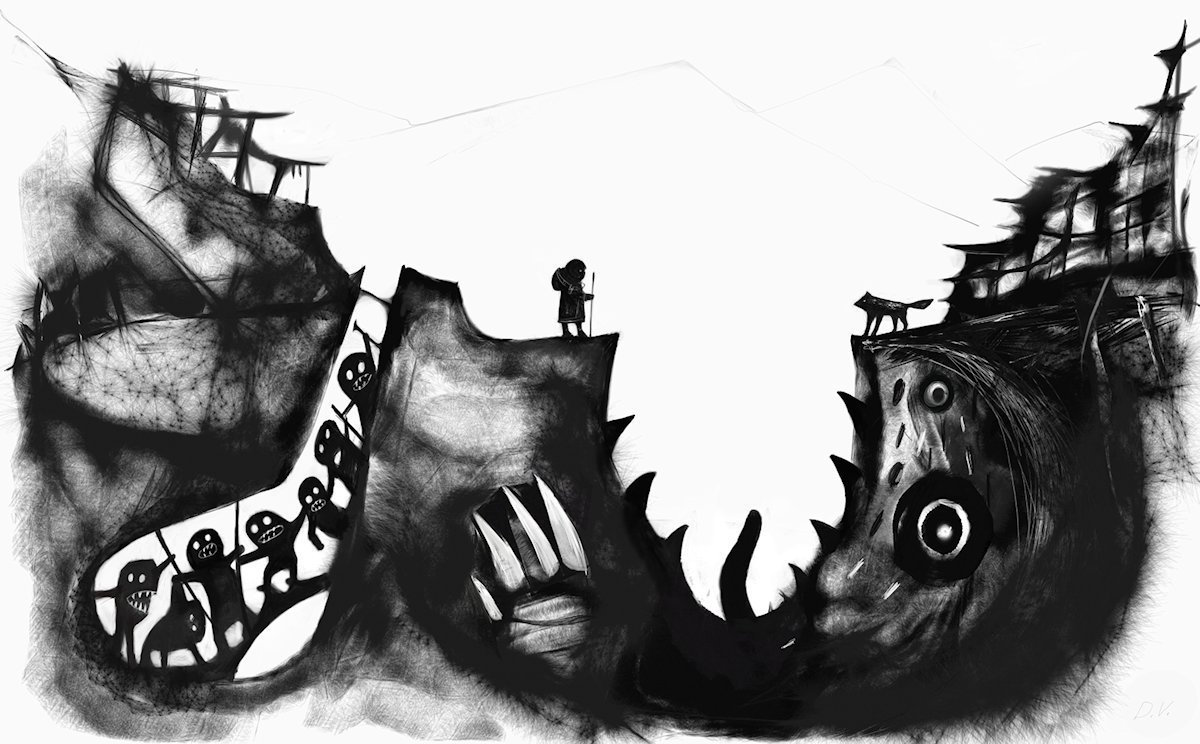
What type of soundtrack did you choose to match Never Alone's unique setting?
Brendan Hogan, our composer from Impossible Acoustic, wrote the music. The landscape and environment depicted in the game served as the jumping-off point for both the mood of the music and the timbre of the sounds used. In addition to using traditional instruments like the piano, he created a palette of unique sounds using recordings of ice and snow and even processed bird and animal sounds.
Also from Impossible Acoustic, Jamie Hunsdale took a "hunter/gatherer" approach to the sound design and foley for the game. Sound elements were hunted down during field recording trips deep into the snowy mountains and forests, and later extracted and manipulated to create a custom reality for every jump, every landing and every footstep that Nuna and Fox take on their great adventure.
Heavy fabrics and natural materials were gathered to create the movement of the characters, while chunks of tree bark, shards of ice, tons of snowballs, three party pizzas and a frozen stream were used to create the texture of the surrounding harsh environment. Jamie has said that "I want people to feel like they need to wear a sweater when they play this game."
The two of them worked very closely with one of our ridiculously talented engineers, Chris Eng, over the course of many months to implement and tweak the audio until it was as much of a character in the game as Nuna and Fox.
Never Alone has just launched simultaneously on Xbox One, Playstation 4, and Steam. Did the Xbox One version present any unique challenges compared to the others?
Each of the three platforms presented their own unique challenges along the way, but the main difficulties we've run into with new hardware is simply the short timeframe we've had to get the game up and running on each system.
We got our development hardware a little later than we would have liked based on the schedule of our project, so it's been pretty amazing to watch the Engineering team work their magic. We went from not even having the dev kits in house to the game running beautifully on all three platforms in a matter of months.
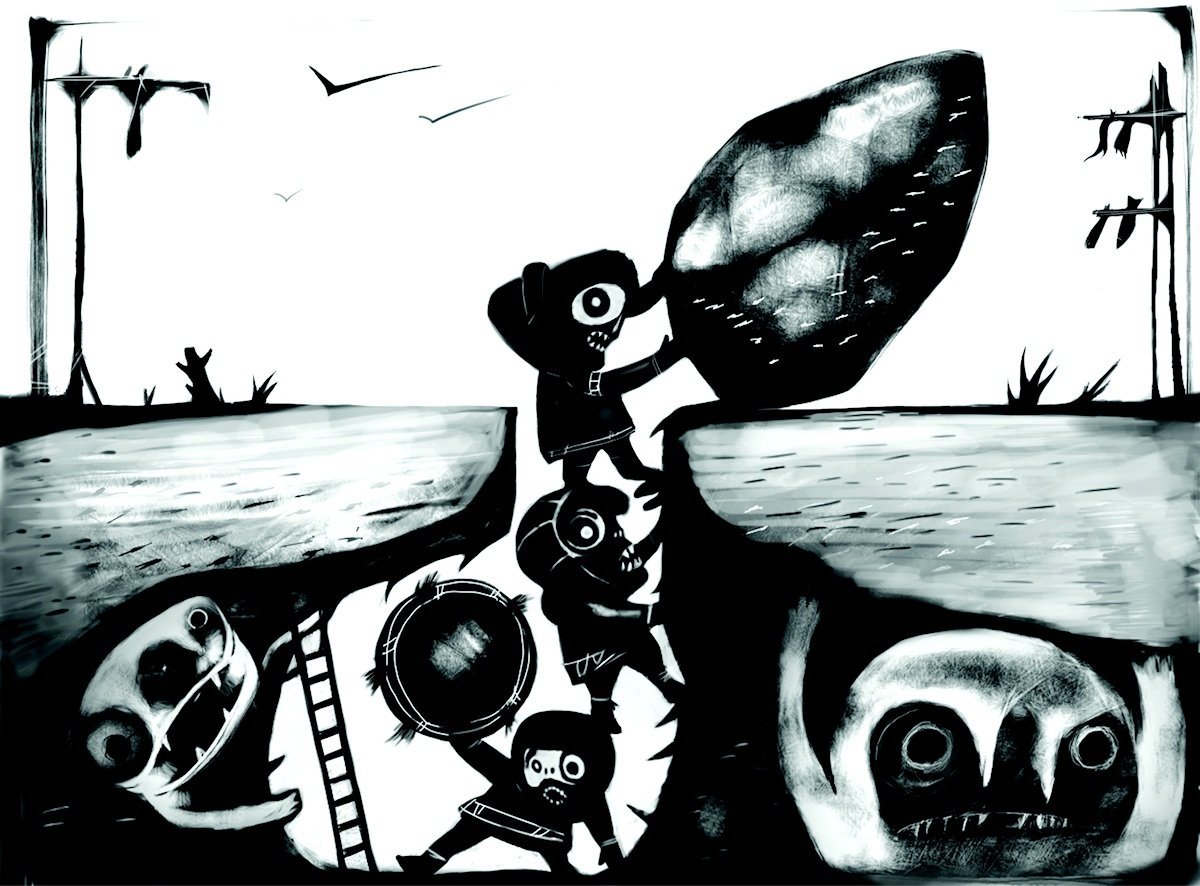
How did the game become part of the ID@Xbox program? What was it like dealing with Microsoft throughout the process?
Our producer Matt Swanson has been the one to handle our relationships with the console manufacturers, so I'll let him answer that. Funny story, though: I got my start in the video game business back in 1997 when I was an Editor for Next Generation Magazine. My boss at the time was Chris Charla, who is now the Director of ID@Xbox. Small world.
Anyway, here's Matt:
"We joined the ID@Xbox Program the day that the announcement went out that they were seeking enrollees. It took a while to hear back, as I'm sure they were inundated by applicants, but once we received confirmation from them everything was a breeze from the publishing end.The documentation they provided was very clear and readable, and the tools they provided for preparing the metadata and publishing was incredibly easy. Everything was in one place, with lots of instruction and a clear pipeline for going through the certification process — a very welcome relief for a first-time publisher working on a new platform. Our reps were great to work with and answered all of our questions promptly.I'd heard horror stories of "the old days" of trying to publish games on some of the previous generation of consoles, but this was a snap in comparison."
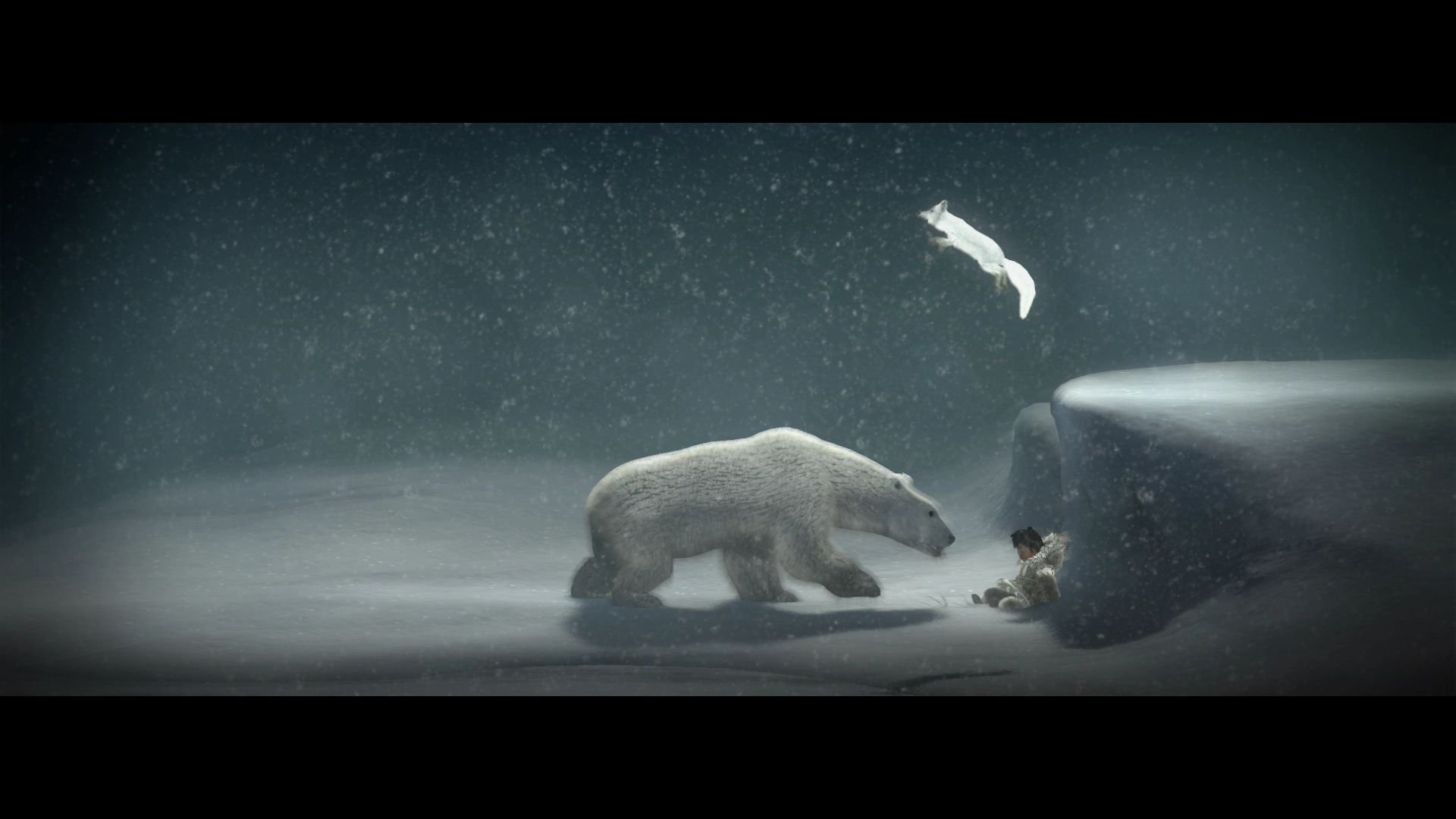
Xbox One gameplay
Finally, if things go well, would you like to make a sequel? Would it be a direct sequel or something based on a different culture?
That depends on how successful we are with Never Alone! I can say that over the course of this project, people from all over the world have taken notice of what we're doing. The feedback from the press has been overwhelming. The response from gamers at all the trade shows we've attended has been phenomenal.
We've even been approached by representatives from other cultures who've seen how much we care about telling stories through this inclusive development process, and want to work together with us to tell stories from THEIR culture through this new genre of games we're creating.
But we've also grown pretty attached to Nuna and Fox, so I don't think anyone has heard the last of them!
- Never Alone – Xbox One – 2.9 GB – $14.99 – Xbox Link

Paul Acevedo was formerly a Games Editor at Windows Central. A lifelong gamer, he has written about videogames for over 15 years and reviewed over 350 games for our site. Follow him on Twitter @PaulRAcevedo. Don’t hate. Appreciate!
